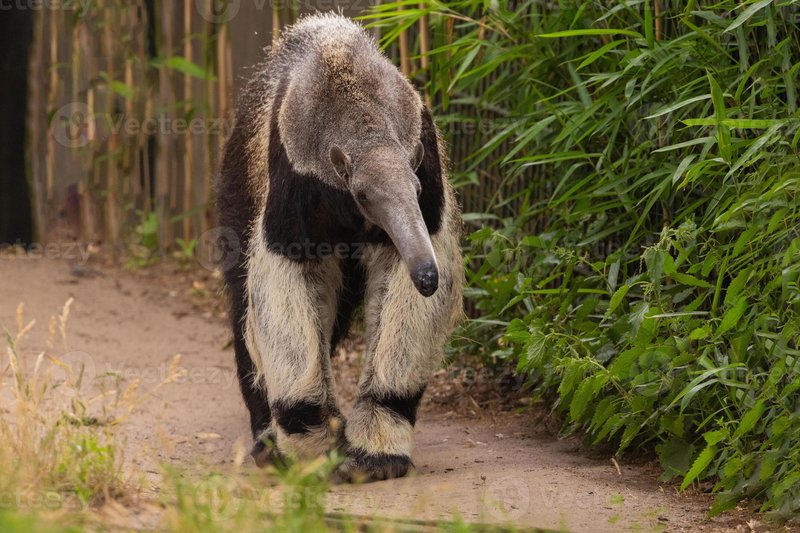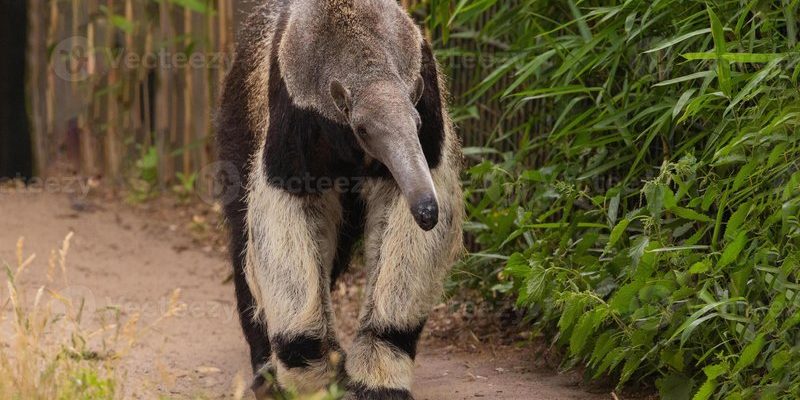
So why should we care about these creatures? Understanding the giant anteater’s role in its ecosystem can help us appreciate not only their unique attributes but also the intricate web of life they support. These animals are foragers, primarily munching on ants and termites, which keeps those insect populations in check. With that in mind, let’s dive into the giant anteater’s world and see why it’s essential for the ecosystem.
What Do Giant Anteaters Eat?
Giant anteaters are notorious for their love of ants and termites. They’re equipped with specialized tongues that can extend up to 16 inches, which helps them reach deep into nests. Honestly, it’s like having a built-in straw for a buffet of insects! They use their sharp claws to rip open mounds and logs, exposing delicious treats within. This diet is not just a quirky preference; it plays a significant role in controlling insect populations.
When giant anteaters feed, they consume thousands of ants or termites in a single sitting. This constant foraging helps keep those insect numbers in check, preventing them from overrunning the ecosystem. On top of that, their feeding habits contribute to soil aeration. By digging into anthills or termite mounds, they break up the soil, which can improve water infiltration and promote healthier plant growth. It’s like a natural gardening service!
Habitat and Range
Giant anteaters are primarily found in Central and South America, roaming through diverse habitats like savannas, grasslands, and tropical forests. They prefer areas with ample supply of their favorite food sources, but they also need space to roam and dig. Without these environments, they wouldn’t just struggle to find food; they could also become a victim of habitat destruction.
You might be wondering how their habitat impacts the larger ecosystem. Well, as they wander and forage, they unintentionally contribute to seed dispersal. Seeds that pass through their digestive system can sprout and grow into new plants, helping to maintain plant diversity. When you consider these animals’ roles, it’s clear they’re not just passive residents of their habitat—they’re active contributors to its health.
Interconnected Relationships with Other Species
Every species in an ecosystem has its role, and the giant anteater is no exception. They share their habitat with a wide variety of animals and plants. For example, they often coexist with other insectivores, like armadillos and certain species of birds, each playing a unique role in keeping insect populations balanced.
Interestingly, when giant anteaters dig into the soil to access their meals, they create opportunities for smaller animals. Bird species can swoop in to eat the insects that were displaced during the anteater’s feast. This interconnectedness illustrates how one creature’s actions can have ripple effects across the ecosystem. In a way, the giant anteater acts like a busy barista, mixing up a blend of interactions that keeps the ecosystem buzzing.
Conservation Status and Threats
Despite their critical role in the ecosystem, giant anteaters face several threats. Habitat loss due to deforestation and agricultural expansion has severely impacted their populations. Additionally, they often fall victim to road accidents or hunting. In some regions, they’re classified as vulnerable, which means their numbers are dwindling, and immediate action is necessary to ensure their survival.
Conservation efforts are crucial for protecting these animals and their habitats. Preserving natural spaces and educating communities about the importance of giant anteaters can help curb the threats they face. It’s not just about saving one species; it’s about maintaining the balance of the entire ecosystem. When we protect giant anteaters, we’re also safeguarding countless other species that rely on the same habitat.
The Role of Giant Anteaters in Ecosystem Resilience
Ecosystems are like complex machines, where every part must work in harmony. The giant anteater plays a vital role in this machine by maintaining insect populations and contributing to soil health. In times of environmental stress, such as droughts or changes in temperature, their presence can help the ecosystem bounce back.
For instance, when anteaters dig up ant and termite mounds, they not only get their meal but also stimulate the soil, which may lead to the growth of new vegetation. This resilience is essential, especially in areas facing climate change. By ensuring a healthy population of giant anteaters, we can help these ecosystems adapt to changing conditions more effectively.
The giant anteater may seem like a solitary creature focused on foraging for its next meal, but its role in the ecosystem is far from isolated. By maintaining insect populations, promoting plant diversity, and contributing to soil health, they play a key role in the intricate web of life. When we think about conservation, it’s vital to remember that every species, no matter how quirky, has its part to play.
Understanding the giant anteater’s role reminds us that protecting one creature benefits the entire ecosystem. So the next time you see a picture of this unique animal, take a moment to appreciate its contributions to the environment. After all, every little bit counts in creating a healthier planet for all of us.

